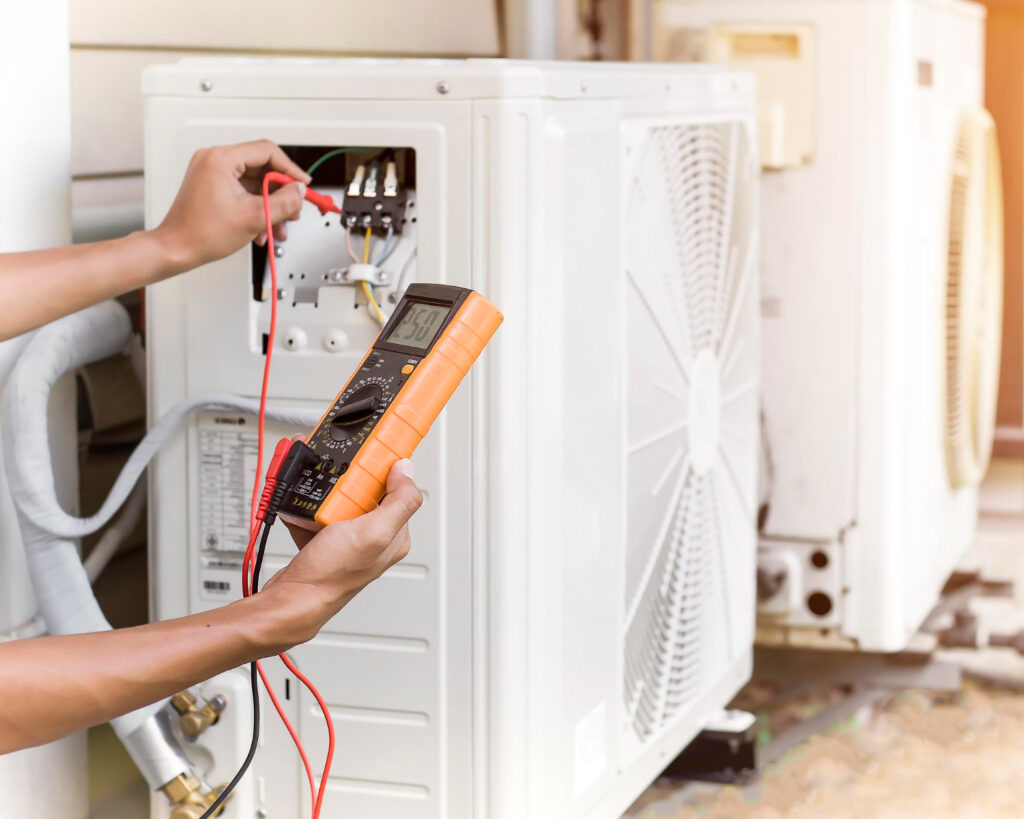Opting for a heat pump installation can significantly transform your home’s heating and cooling efficiency. We understand the complexities involved in choosing and installing the right heat pump system that aligns with your home’s specific needs. Heat pumps are not only eco-friendly but also economical in the long run, making them an attractive option for modern homeowners looking to reduce their energy usage and enhance indoor comfort.
Understanding Heat Pump Systems for Modern Homes
Heat pumps are an increasingly popular choice for modern homes due to their efficiency and versatility in both heating and cooling environments. Essentially, a heat pump transfers heat from one place to another using a refrigeration cycle similar to that found in an air conditioner or a refrigerator. During the colder months, heat pumps extract heat from the outside air or ground to warm your home. Conversely, in the warmer months, they reverse the process, removing heat from your home to keep it cool.
There are three main types of heat pumps: air-source, geothermal, and water-source. Air-source heat pumps are the most common and are known for their efficiency in moderate climates. They transfer heat between your house and the outside air. Geothermal heat pumps, also known as ground-source heat pumps, utilize the stable underground temperature to provide heating, cooling, and even hot water in some cases. Lastly, water-source heat pumps operate similarly to geothermal pumps but use nearby water sources instead, making them ideal for properties near bodies of water.
Key Factors to Consider Before Installing a Heat Pump
Before deciding to install a heat pump, it’s crucial to consider several factors to ensure it’s the right fit for your home and can operate efficiently. Start by assessing the layout and size of your home. Heat pumps require sufficient space for installation and optimal airflow, so understanding your home’s layout will help determine the best type and placement of the heat pump.
The climate of your area plays a significant role in selecting the right heat pump. For example, air-source heat pumps are less efficient in extremely cold climates unless specifically designed for such conditions. Alternatively, geothermal heat pumps are excellent for a broader range of climates because of their use of underground temperatures, which remain relatively constant.
Lastly, evaluate your existing heating, ventilation, and air conditioning (HVAC) infrastructure to determine compatibility with a new heat pump system. This includes the ductwork and electrical systems that need to be compatible or might require upgrades to accommodate the heat pump. Our professionals will help you analyze these factors to ensure your heat pump installation is a success, enhancing the comfort and efficiency of your home effectively.
Step-by-Step Heat Pump Installation Process
Installing a heat pump system involves careful planning and precise execution to ensure optimal efficiency and performance. The process begins with thorough site preparation, which includes ensuring that the installation area is clear of debris and properly sized for the new system. Safety measures are paramount; our technicians are trained to handle all aspects of the installation process, from managing electrical connections to ensuring that the heat pump is securely mounted.
The installation process typically follows these detailed steps: First, the old HVAC system, if applicable, is carefully removed and disposed of safely. Next, we prepare the ground or install supports for the new unit, depending on the type of heat pump being installed—whether it’s ground-source or air-source. Our technicians then install any necessary ductwork adjustments to accommodate the new system. This is followed by the installation of the heat pump itself, including connecting it to the existing HVAC system and ensuring all electrical and plumbing connections are secure and leak-free.
Maximizing Efficiency and Longevity Post-Installation
After installation, maintaining your new heat pump is crucial to maximize its efficiency and longevity. Regular maintenance routines are essential and should include checking and cleaning filters, inspecting ductwork for leaks, and ensuring that all components are functioning correctly. We recommend setting a maintenance schedule that aligns with the change of seasons, as this can prepare the system for different heating and cooling demands.
We also advise our customers on the best settings for their heat pumps during different times of the year to optimize performance and energy use. For instance, during the winter months, the heat pump settings can be adjusted to maximize warmth without overextending the unit, thereby conserving energy and reducing wear and tear. Professional servicing is recommended at least once a year to ensure that any potential issues are caught early and to maintain the system’s efficiency and safety.
Wrapping It All Up
Understanding the intricacies of heat pump installation and maintenance is key to enjoying a comfortable and energy-efficient home. Whether you’re considering a switch to a heat pump system or looking to optimize your current setup, we are here to provide expert guidance and high-quality service. Remember, a well-maintained heat pump not only lasts longer but also performs better, helping to reduce your energy bills and increase your home comfort.
If you’re ready to experience the benefits of a professional heat pump installation in Cathedral City, or need expert advice on maintaining your system, contact us today at Air Plus Heating and Air. Let us help you achieve the comfort and efficiency your home deserves.





